A fascinating yet painful look at some of New Orleans’ iconic landmarks that did not endure the test of time. As Benny Grunch would say, they just “ain’t dere no more.”
1. First Saint Charles Hotel

The first Saint Charles Hotel was built in 1835. A traveling Brit called it the “finest piece of architecture in the New World.” It met its fate in an 1851 fire that burned many other historic structures to the ground as well. This 1847 photo is one of the only known surviving photos of the structure.
2. Second Saint Charles Hotel

Source: http://www.old-new-orleans.com/
The second Saint Charles Hotel was built in 1857 and in 1894 it met the same fate as its predecessor.
3. Old Orleans Parish Prison

Built in 1834, this massive prison housed a gallows where people gathered to watch public lynchings. It was also home to the 1891 massacre where 11 Italian-Americans were kidnapped and slaughtered. The building was razed in 1895 for its inhumane living conditions.
4. French Opera House
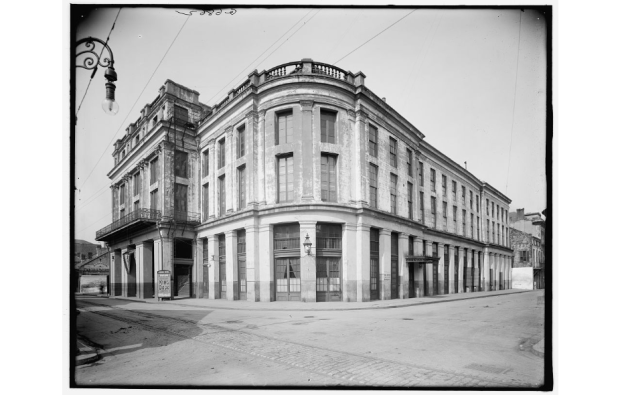
Built in 1859 and designed by James Gallier Jr., the French Opera House, or the Théâtre de l’Opéra, was a landmark for French Creoles, local socialites, and the New Orleans elite. It stood at the corner of Bourbon and Toulouse. It burned down in 1919.
5. Second Masonic Temple
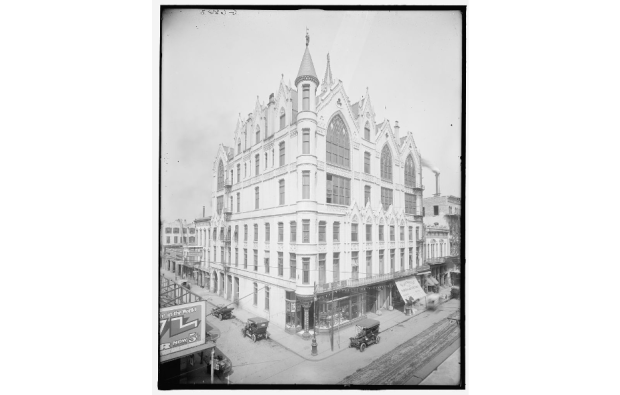
Built in 1892, this building served as the headquarters for the Masons until it was demolished in 1926. The New Orleans Hilton St. Charles Avenue Hotel stands in its place today.
6. Temple Sinai
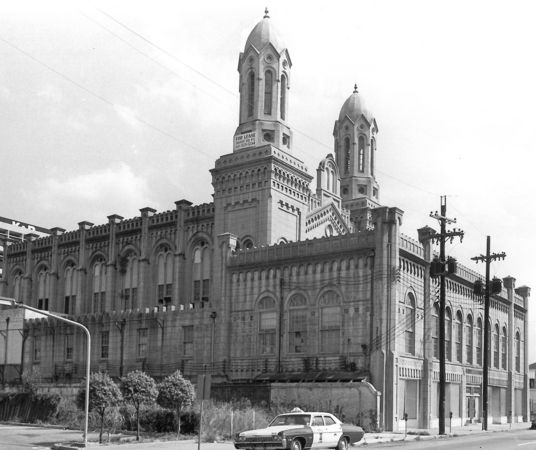
Temple Sinai was constructed in 1872 as the first Jewish Reform temple and housed the oldest Reform congregation in the state. It was demolished in 1977. The WDSU building stands there today.
7. First Presbyterian

Standing at Lafayette Square, this church was built in 1857 after the first one burned to the ground. It suffered from hurricane damage in 1915, and was eventually demolished in 1938 by the federal government to make way for the F. Edward Hebert Federal Building.
8. Jewish Children’s Home

Built where the current Jewish Community Center stands on St. Charles, this building serviced children and widows after massive yellow fever outbreaks in the 1840s and 1850s. It served the Jewish community until its demolition in the 1960s.
9. Orleans Parish Criminal Courts Building
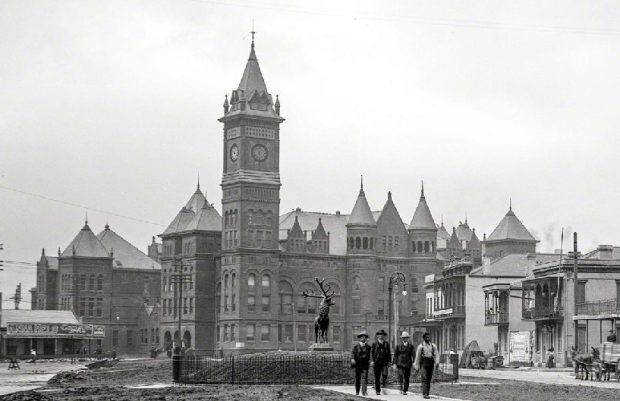
The Orleans Parish Criminal Courts Building was built in the 1880s and served as the city’s main court and prison until it was demolished in the 1950s.
10. Union Station
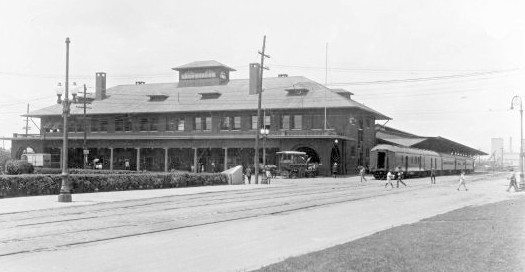
First built in 1892, this station was designed by Louis Sullivan with help from a young Frank Lloyd Wright. It was demolished in 1954.
11. L&N Terminal
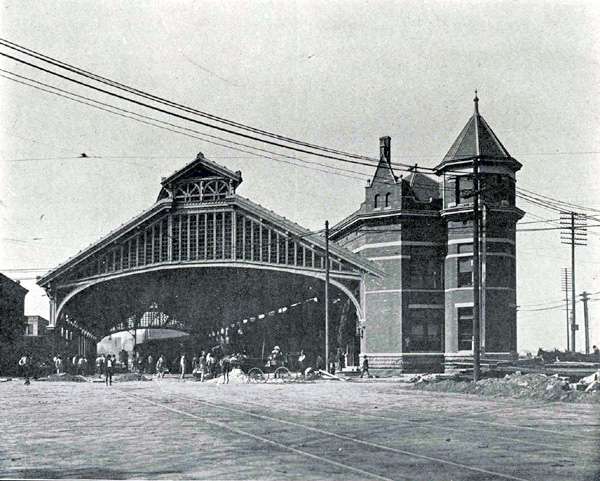
First opened in 1902, this station was located at the foot of Canal Street and serviced some of the busiest trains in the South. It was demolished in 1954 when the new Union Passenger Terminal was built. The Aquarium of the Americas stands here today.
12. Southern Railroad Depot

The Southern Railroad Depot was built in 1908 on the corner of Rampart and Canal Street. It was a main train station for the city until it was demolished in 1956. The Simon Bolivar statue stands in its place.
13. Pelican Stadium

Located at Tulane and South Carrollton Avenue, this huge baseball stadium was built in 1915 to house the New Orleans Pelicans, the city’s notable baseball team. It was demolished in 1957, and a Burger King sits where the infield was located.
14. New Orleans Main Public Library

This library was built in 1908 at Lee Circle after the city received a $250,000 grant from Andrew Carnegie. It was demolished in 1959 after the opening of the current main library.
15. The Touro-Shakespeare Almshouse
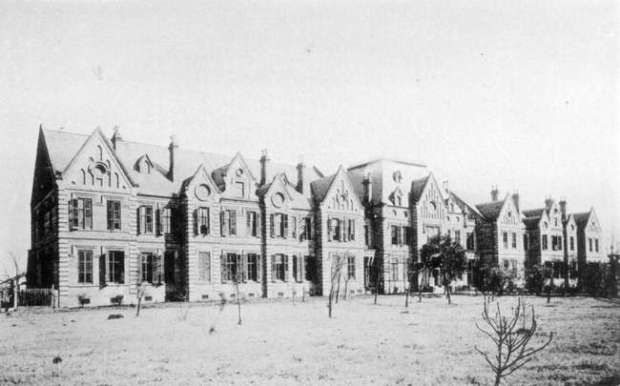
Built in 1882 on Danneel Street between Nashville and Joseph, the Touro-Shakespeare Almshouse provided education and job training for girls and young women with disabilities. It was demolished in the early 1960s.
They were many other historic buildings that were also destroyed by various means. The majority of these sites, if not all, would certainly be considered historic landmarks had they survived. Many of them were demolished in the 1950s, just a decade or so shy to the movement to historically preserve such buildings. If only…
Edit: I had the incorrect date for the Temple Sinai demolition. The correct date is 1977.
Wrong date for Jewish children’s home demolition. It served as the Jewish Community center until the mid 1960s, when it was demolished to make room for the new JCC. I know because I was a camp counselor there in the 60s.
Thank you for the correction.
# 12 The Southern Railroad Depot was built in 1908 on the corner of Rampart and Canal Street. It was a main train station for the city until it was demolished in 1956. The Simon Bolivar statue stands in its place.
SHOULD SAY – Basin Street and Canal Street
# 12 The Southern Railroad Depot was built in 1908 on the corner of Basin Street and Canal Street. It was a main train station for the city until it was demolished in 1956. The Simon Bolivar statue stands in its place.
It would be more fair if the reason for the 1891 kidnap and lynching was given. These members of the “Black Hand” had murdered NO Police Superintendent D. Hennessey. Hennessey was investigated this group which led to his murder.
While many of these old structures are revered today, at the time of demolition, most were rundown and citizens of the day were glad to see them go. The Criminal Court’s Bldg was poorly constructed and was falling down.